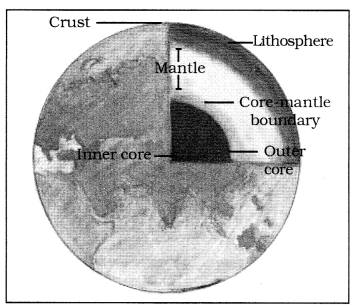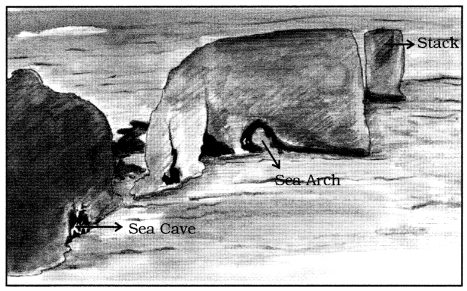उपसर्ग और प्रत्यय MCQ Questions with Answers Class 6 Hindi
Students who are searching for NCERT MCQ Questions for Class 6 Hindi Grammar उपसर्ग और प्रत्यय with Answers Pdf free download can refer to this page thoroughly. Because here we have compiled a list of MCQ Questions for Class 6 Hindi with Answers. So, Plan your Exam Preparation accordingly with the उपसर्ग और प्रत्यय Class 6 MCQs Questions with Answers PDF. Also, you can practice and test your subject knowledge by solving these उपसर्ग और प्रत्यय objective questions.
MCQ Questions for Class 6 Hindi Grammar उपसर्ग और प्रत्यय with Answers
Question 1.
‘निः’ उपसर्ग युक्त शब्द छाँटिए
(a) निकष
(b) नियम
(c) निर्मल
(d) निपात
Answer
Answer: (c) निर्मल
Question 2.
‘दुः’ उपसर्ग युक्त शब्द छाँटिए
(a) दुधिया
(b) दुर्दशा
(c) दुधारू
(d) दुपहरिया
Answer
Answer: (b) दुर्दशा
Question 3.
‘वि’ उपसर्ग युक्त शब्द छाँटिए
(a) विकराल
(b) विवर
(c) विप्र
(d) विधवा
Answer
Answer: (a) विकराल
Question 4.
‘प्रति’ उपसर्ग युक्त शब्द छाँटिए
(a) प्रच्छाया
(b) प्रगति
(c) प्रत्यक्ष
(d) प्रक्रिया
Answer
Answer: (c) प्रत्यक्ष
Question 5.
‘परि’ उपसर्ग युक्त शब्द छाँटिए
(a) परित
(b) परिचय
(c) परिजन
(d) परिंदा
Answer
Answer: (c) परिजन
Question 6.
‘सम्’ उपसर्ग युक्त शब्द छाँटिए
(a) सहयोग
(b) संबंध
(c) समय
(d) समाचार
Answer
Answer: (b) संबंध
Question 7.
‘स’ उपसर्ग वाला कौन-सा शब्द नहीं है
(a) सफल
(b) सरस
(c) सजीव
(d) सहोदर
Answer
Answer: (d) सहोदर
Question 8.
‘सु’ उपसर्ग वाला कौन-सा शब्द नहीं है
(a) सुपात्र
(b) सुंदर
(c) सुवास
(d) स्वागत
Answer
Answer: (b) सुंदर
Question 9.
कौन-से शब्द में ‘अंत’ प्रत्यय नहीं है
(a) गढ़त
(b) रटंत
(c) महन्त
(d) भिड़न्त
Answer
Answer: (c) महन्त
Question 10.
कौन-से शब्द में ‘इक’ प्रत्यय नहीं है-
(a) भिक्षुक
(b) दैनिक
(c) यौगिक
(d) पाक्षिक
Answer
Answer: (a) भिक्षुक
Question 11.
‘आव’ प्रत्यय किस शब्द में नहीं है
(a) बहाव
(b) बचाव
(c) फैलाव
(d) आओ
Answer
Answer: (d) आओ
Question 12.
‘ईला’ प्रत्यय कौन-से शब्द में नहीं है
(a) नीला
(b) हठीला
(c) खर्चीला
(d) जहरीला
Answer
Answer: (a) नीला
Question 13.
‘इत’ प्रत्यय किस शब्द में नहीं है
(a) अंकित
(b) समुचित
(c) मंडित
(d) पुष्पित
Answer
Answer: (b) समुचित
Question 14.
कौन-सा शब्द ‘अ’ उपसर्ग से नहीं बना है ?
(a) अजर
(b) अनंत
(c) अगोचर
(d) अमर
Answer
Answer: (b) अनंत
Question 15.
‘अन्’ उपसर्ग से बना कौन-सा शब्द नहीं है?
(a) अनुदार
(b) अनुपम
(c) अगम्य
(d) अनासक्त
Answer
Answer: (c) अगम्य
Question 16.
‘अप’ उपसर्ग से युक्त कौन-सा शब्द नहीं है ?
(a) अपमान
(b) अपार
(c) अपभ्रंश
(d) अपव्यय
Answer
Answer: (b) अपार
Question 17.
‘अव’ उपसर्ग से युक्त कौन-सा शब्द नहीं है ?
(a) अव्यय
(b) अवहेलना
(c) अवगुण
(d) अवरुद्ध
Answer
Answer: (a) अव्यय
Question 18.
‘अधि’ उपसर्ग युक्त कौन-सा शब्द नहीं है ?
(a) अध्यक्ष
(b) अध्येता
(c) अधिसंख्य
(d) अधीन
Answer
Answer: (d) अधीन
Question 19.
‘अनु’ उपसर्ग किस शब्द में नहीं लगा है ?
(a) अन्वीक्षण
(b) अन्वर्थ
(c) अनुत्तम
(d) अनुवाद
Answer
Answer: (c) अनुत्तम
Question 20.
‘अभि’ उपसर्ग युक्त कौन-सा शब्द नहीं है ?
(a) अभीष्ट
(b) अभिन्न
(c) अभ्यर्थी
(d) अभ्यस्त
Answer
Answer: (b) अभिन्न
Question 21.
‘आ’ उपसर्ग किस शब्द में नहीं है ?
(a) आयात
(b) आहत
(c) आचार
(d) आहार
Answer
Answer: (c) आचार
Question 22.
‘अति’ उपसर्ग युक्त कौन-सा शब्द नहीं है ?
(a) अत्यधिक
(b) अतुल
(c) अत्यंत
(d) अत्युत्तम
Answer
Answer: (b) अतुल
Question 23.
‘उत’ उपसर्ग युक्त कौन-सा शब्द नहीं है ?
(a) उच्चारण
(b) उद्योग
(c) उन्माद
(d) उपज
Answer
Answer: (d) उपज
Question 24.
‘कु’ उपसर्ग युक्त शब्द छाँटिए
(a) कुपुत्र
(b) कुबेर
(c) कुमार
(d) कुब्ज
Answer
Answer: (a) कुपुत्र
Question 25.
‘नि’ उपसर्ग युक्त शब्द छाँटिए
(a) निष्क्रिय
(b) निष्ठ
(c) निष्कासन
(d) निकृष्ट
Answer
Answer: (d) निकृष्ट
We think the shed NCERT MCQ Questions for Class 6 Hindi Grammar उपसर्ग और प्रत्यय with Answers Pdf free download will benefit you to the fullest. For any queries regarding CBSE Class 6 Hindi उपसर्ग और प्रत्यय MCQs Multiple Choice Questions with Answers, share with us via the below comment box and we’ll reply back to you at the earliest possible.
उपसर्ग और प्रत्यय MCQ Questions with Answers Class 6 Hindi Read More »


